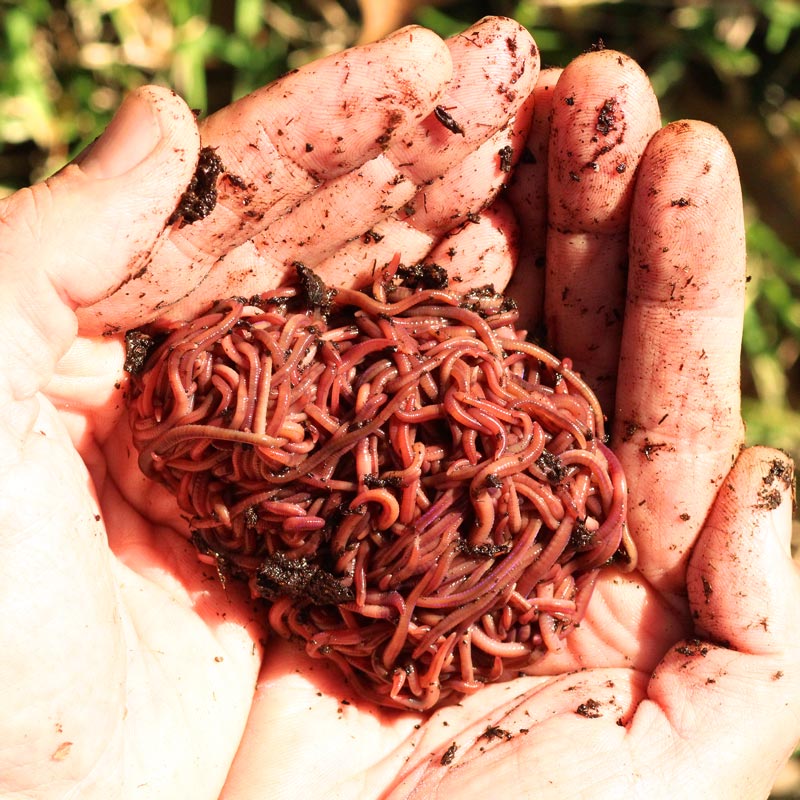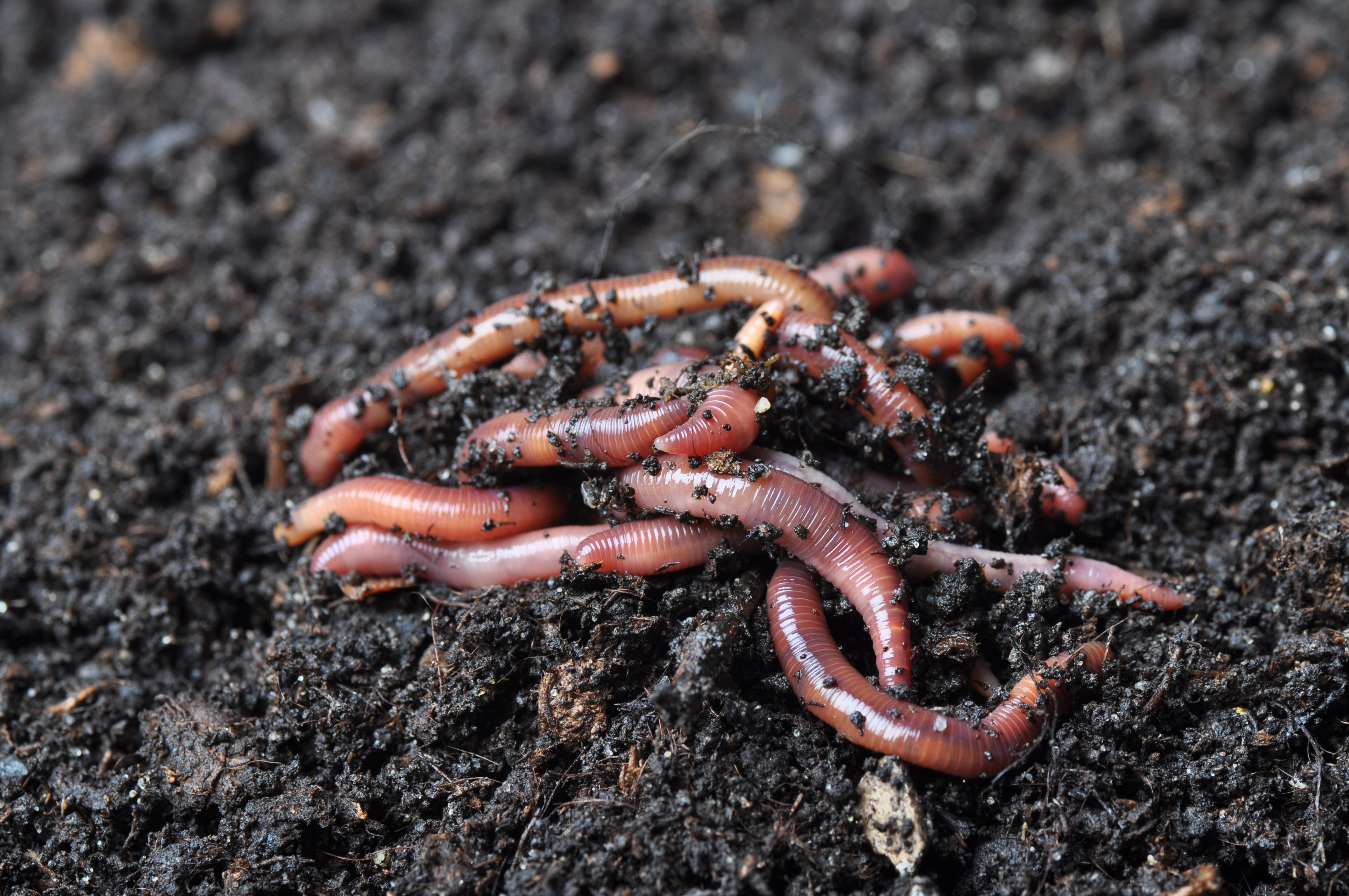Red Wigglers: The Unsung Heroes of Organic Waste Recycling
Red wigglers, or Eisenia fetida, act as essential agents in the organic waste recycling process, transforming disposed of materials into beneficial vermicompost. Their efficient break down of natural matter not only improves soil high quality however likewise adds to sustainable waste management techniques. As the world significantly looks for options to battle waste build-up and enhance agricultural efficiency, comprehending the duty of these worms ends up being necessary. What systems permit them to grow in compost settings, and exactly how can they be properly utilized in both household and business settings? Checking out these inquiries discloses the more comprehensive effects of vermicomposting in our ecological landscape.
What Are Red Wigglers?
The impressive resilience of red wigglers, clinically referred to as Eisenia fetida, highlights their important role in natural waste recycling. These tiny, reddish-brown earthworms are generally found in decomposing raw material, such as compost heap and manure stacks. Lake Hickory Bait. Unlike other earthworm varieties, red wigglers flourish in nutrient-rich settings and are extremely reliable at breaking down natural products, making them essential for vermicomposting

(Red Wiggler Express)Along with their role in waste reduction, red wigglers add to dirt health by enhancing soil structure and oygenation with their burrowing activities (Lake Hickory Bait). Their presence in composting systems not only improves disintegration prices but likewise advertises a sustainable method to lose management, illustrating their value in environmental conservation initiatives
Advantages of Composting With Worms
Composting with worms, particularly red wigglers, supplies many advantages that boost both waste monitoring and soil wellness. Initially, these worms efficiently break down organic waste, transforming it into nutrient-rich vermicompost that enriches dirt. This process accelerates decay, permitting a quicker recycling of kitchen scraps and various other organic materials compared to traditional composting approaches.
Additionally, the vermicompost produced by red wigglers is brimming with beneficial bacteria, which assist boost soil framework, oygenation, and wetness retention. This enhances the overall health of plants, promoting vigorous growth and enhanced yields in gardens and agricultural settings. Additionally, making use of worms in composting lessens the production of greenhouse gases, such as methane, adding to an extra lasting waste monitoring system.

Just How to Begin Vermicomposting
Developing a vermicomposting system is a simple process that can produce considerable benefits for both waste monitoring and dirt enrichment. To start, choose a suitable container, such as a plastic container or wood box, with ample ventilation openings to guarantee proper air movement. The measurements need to ideally be about 2 feet by 3 feet, permitting adequate space for the worms to thrive.
Next, prepare bedding product, which can consist of shredded newspaper, cardboard, or coconut coir. This bedding should be moistened to create a suitable habitat for the worms. Once the bed linens remains in area, present red wigglers (Eisenia fetida) right into the bin, commonly around one extra pound of worms for every single square foot of area.
Adhering to the positioning of worms, add organic waste, such as fruit and veggie scraps, coffee grounds, and smashed eggshells. With these actions, you will efficiently initiate a vermicomposting system that adds to sustainable waste monitoring and enhances your soil.
Keeping a Healthy Worm Bin
(Red Wiggler Express)Keeping a worm container flourishing requires normal attention and treatment to guarantee the wellness of the red wigglers and the effectiveness of the composting procedure. Appropriate upkeep begins with checking the wetness degrees; the bin must be damp however not waterlogged. A great rule of thumb is to preserve an uniformity similar to a wrung-out sponge.
Carefully blending the bed linens and food scraps every few weeks stops compaction and makes certain that all worms have access to oxygen. Furthermore, it is vital to feed the worms properly.
If the container ends up being as well hot or cold, the worms may become worried. By faithfully taking care of these aspects, one can preserve a robust and productive worm container.
Effect On Lasting Living
The successful maintenance of a worm container not just benefits the health of red wigglers yet additionally contributes considerably to sustainable living techniques. By reusing organic waste, such as kitchen scraps and backyard particles, red wigglers help draw away considerable amounts of product from garbage dumps. This reduction in waste not just reduces greenhouse gas discharges but additionally lessens the environmental worry linked with waste administration.
Furthermore, the castings produced by red wigglers offer as a nutrient-rich natural fertilizer, enhancing dirt wellness and advertising plant development. This natural alternative to chemical plant foods supports sustainable farming and gardening practices, decreasing dependence on artificial inputs that can harm ecosystems. Additionally, worm composting fosters awareness of waste monitoring, encouraging people and communities to take on more sustainable behaviors.

Conclusion
In recap, red wigglers act as important contributors to organic waste reusing through their effective decay of organic original site products. Their ability to create nutrient-rich vermicompost boosts dirt health and wellness and supports sustainable agricultural practices. By integrating vermicomposting right into waste monitoring methods, people and neighborhoods can significantly decrease waste while advertising environmental sustainability. The role of Eisenia fetida in promoting healthy communities underscores the relevance of these organisms in attaining sustainable living and improving dirt fertility.
 Kel Mitchell Then & Now!
Kel Mitchell Then & Now! Michael Bower Then & Now!
Michael Bower Then & Now! Keshia Knight Pulliam Then & Now!
Keshia Knight Pulliam Then & Now! Batista Then & Now!
Batista Then & Now! Ryan Phillippe Then & Now!
Ryan Phillippe Then & Now!